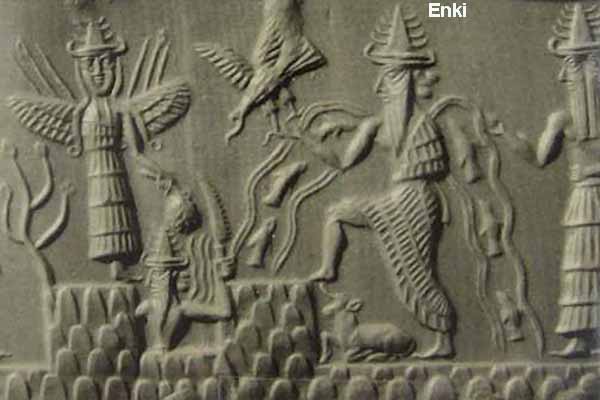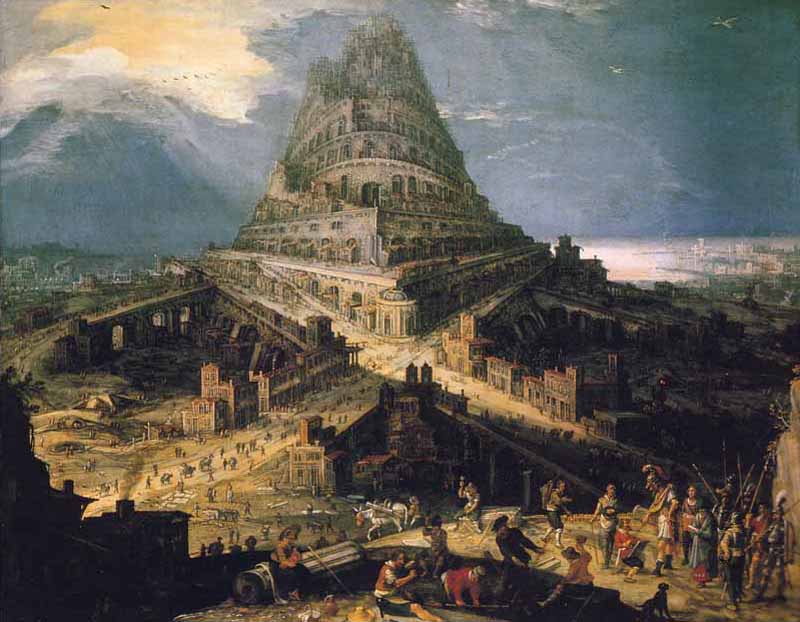

Eridu is an ancient Sumerian city in what is now Tell Abu Shahrain, Dhi Qar Governorate, Iraq. Eridu was considered the earliest city in southern Mesopotamia, and is one of the oldest cities in the world. Located 12 km southwest of Ur, Eridu was the southernmost of a conglomeration of Sumerian cities that grew about temples, almost in sight of one another.

In Sumerian mythology, Eridu was originally the home of Enki, who was considered to have founded the city, later known by the Akkadians as Ea. His temple was called E-Abzu, as Enki was believed to live in Abzu ("Deep Ocean"), an aquifer from which all life was believed to stem. Eridu transliterated as Eridug, could mean "mighty place" or "guidance place". In the Sumerian king list, Eridu is named as the city of the first kings.
The Sumerian King List is an ancient manuscript originally recorded in the Sumerian language, listing kings of Sumer (ancient southern Iraq) from Sumerian and neighboring dynasties, their supposed reign lengths, and the locations of "official" kingship. Kingship was believed to have been handed down by the gods, and could be transferred from one city to another, reflecting perceived hegemony in the region. Throughout its Bronze Age existence, the document evolved into a political tool. Its final and single attested version, dating to the Middle Bronze Age, aimed to legitimize Isin's claims to hegemony when Isin was vying for dominance with Larsa and other neighboring city-states in southern Mesopotamia.
The list blends prehistorical, presumably mythical predynastic rulers with implausibly lengthy reigns with later, more plausibly historical dynasties. Although the primal kings are historically unattested, this does not preclude their possible correspondence with historical rulers who were later mythicized. Some Assyriologists view the predynastic kings as a later fictional addition.
Only one ruler listed is known to be female: Kug-Bau "the (female) tavern-keeper", who alone accounts for the Third Dynasty of Kish. The earliest listed ruler whose historicity has been archaeologically verified is En-me-barage-si of Kish, ca. 2600 BC. Reference to this individual in the Epic of Gilgamesh has led to speculation that Gilgamesh himself may be historical.
Three dynasties are notably excluded from the list: the Larsa dynasty, which vied for power with the (included) Isin dynasty during the Isin-Larsa period; and the two dynasties of Lagash, which respectively preceded and ensued the Akkadian Empire, when Lagash exercised considerable influence in the region. Lagash in particular is known directly from archaeological artifacts dating from ca. 2500 BC. The list is important to the chronology of the 3rd millennium BC. However, the fact that many of the dynasties listed reigned simultaneously from varying localities makes it difficult to reproduce a strict linear chronology.
Early dates are approximate, and are based on available archaeological data; for most pre-Akkadian rulers listed, this king list is itself the lone source of information. Beginning with Lugal-zage-si and the Third Dynasty of Uruk (which was defeated by Sargon of Akkad), a better understanding of how subsequent rulers fit into the chronology of the ancient Near East can be deduced. The short chronology is used here.
None of the following predynastic "antediluvian" rulers have been verified via archaeological excavations, epigraphical inscriptions, or otherwise. It is possible that they correspond to the Early Bronze Age Jemdet Nasr period culture which ended approximately 2900 BC, immediately preceding the dynasts. It is also possible that they were fictional creations to make the kingdom seem more legitimate and ancient to its subjects which would explain the exaggerated lifespans and recurring and composite characters that have overwhelming similarities with their predecessors.
The king list gave particularly long rules to the kings who ruled before a great flood occurred, and shows how the center of power progressively moved from the south to the north of the country. Adapa U-an, elsewhere called the first man, was a half-god, half-man culture hero, called by the title Abgallu (ab=water, gal=big, lu=man) of Eridu. He was considered to have brought civilization to the city from Dilmun (probably Bahrain), and he served Alulim.
In Sumerian mythology, Eridu was the home of the Abzu temple of the god Enki, the Sumerian counterpart of the Akkadian water-god Ea. Like all the Sumerian and Babylonian gods, Enki/Ea began as a local god, who came to share, according to the later cosmology, with Anu and Enlil, the rule of the cosmos. His kingdom was the waters that surrounded the world and lay below it (Sumerian ab=water; zu=far).
The stories of Inanna, goddess of Uruk, describe how she had to go to Eridu in order to receive the gifts of civilization. At first Enki, the god of Eridu attempted to retrieve these sources of his power, but later willingly accepted that Uruk now was the centre of the land. This seems to be a mythical reference to the transfer of power northward, mentioned above.
Babylonian texts also talk of the creation of Eridu by the god Marduk as the first city, "the holy city, the dwelling of their the other gods delight".
In the court of Assyria, special physicians trained in the ancient lore of Eridu, far to the south, foretold the course of sickness from signs and portents on the patient's body, and offered the appropriate incantations and magical resources as cures.
In Sumerian mythology, it was said to be one of the five cities built before the Deluge occurred.
Eridu appears to be the earliest settlement in the region, founded ca. 5400 BC, close to the Persian Gulf near the mouth of the Euphrates River. Because of accumulation of silt at the shoreline over the millennia, the remains of Eridu are now some distance from the gulf at Abu Shahrain in Iraq.
According to Gwendolyn Leick, Eridu was formed at the confluence of three separate ecosystems, supporting three distinct lifestyles, that came to an agreement about access to fresh water in a desert environment. The oldest agrarian settlement seems to have been based upon intensive subsistence irrigation agriculture derived from the Samarra culture to the north, characterized by the building of canals, and mud-brick buildings. The fisher-hunter cultures of the Arabian littoral were responsible for the extensive middens along the Arabian shoreline, and may have been the original Sumerians. They seem to have dwelt in reed huts.
The third culture that contributed to the building of Eridu was the nomadic Semitic pastoralists of herds of sheep and goats living in tents in semi-desert areas. All three cultures seem implicated in the earliest levels of the city. The urban settlement was centered on an impressive temple complex built of mudbrick, within a small depression that allowed water to accumulate.
Kate Fielden reports "The earliest village settlement (c.5000 BC) had grown into a substantial city of mudbrick and reed houses by c.2900 BC, covering 8-10 ha (20-25 acres).
By c.2050 BC the city had declined; there is little evidence of occupation after that date. Eighteen superimposed mudbrick temples at the site underlie the unfinished Ziggurat of Amar-Sin (c.2047-2039 BC). The finding of extensive deposits of fishbones associated with the earliest levels also shows a continuity of the Abzu cult associated later with Enki and Ea. This apparent continuity of occupation and religious observance at Eridu provide convincing evidence for the indigenous origin of Sumerian civilization.
Eridu was abandoned for long periods, before it was finally deserted and allowed to fall into ruin in the 6th century BC. The encroachment of neighboring sand dunes, and the rise of a saline water table, set early limits to its agricultural base so in its later Neo-Babylonian development, Eridu was rebuilt as a purely temple site, in honor of its earliest history.
The urban nucleus of Eridu was Enki's temple, called House of the Aquifer which in later history was called House of the Waters. The name refers to Enki's realm. His consort Ninhursanga had a nearby temple at Ubaid. During the Ur III period a ziggurat was built over the remains of previous temples by Ur-Nammu.

Tower of Babel